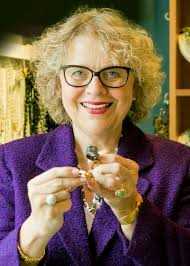On the market, there are natural stones (found in nature) or synthetic stones (made in the laboratory).
When making a purchase, the main selection criterion is color.
The rubies, sapphires and emeralds are very often treated to improve this famous color and also the transparency … The intensity of the treatments (heating, irradiation, filling) comes to affect the value. A beautiful untreated stone is worth much more than its apparent treated twin …
Ruby and sapphire: brother and sister
Both are from the corundum family. There are in nature of sapphires of all colors (pink, green, yellow, purple, orange) except red … When the sapphire is red, it is called ruby!
Resistant to scratches (9/10) and not very brittle, ruby and sapphire are easily worn on a ring everyday.
Rubis
The most sought-after red is called pigeon blood – frank red with a slight tinge of blue. Red must not be shaded with purple or orange. Too dark, the ruby becomes brownish.
Too pale, it becomes pink …
The best color is reminiscent of a red traffic light.
The rubies of Myanmar are, in principle, the highest rated. All production is in Southeast Asia (Thailand, Vietnam, Cambodia, Sri Lanka)
Sapphire
Of course, blue sapphire is the best known. The color must be homogeneous. Blueberry blue (Kashmir) or blue overseas (Burma) remain classics. Dark sapphires, without transparency (black-blue – typical of Australia) have very little value.
Emerald
The emerald is one of the rarest stones. More green is intense, lively and homogeneous plus it is expensive, regardless of its country of origin. Connoisseurs refer to the color of the spring grass. Pale greens and green bottles are little sought after. Most emeralds show frost (crystallization peculiarity) called emerald gardens.
The main producing countries are Colombia, Brazil and Zambia.
Resistant to scratches (7.7 / 10), the emerald is fragile at break. We must treat her with love!
True or false ?
‘Genuine stones’ are natural stones.
FALSE
This name is confusing because the stone is true but … made in the laboratory from the same chemical elements. The expression stone of natural origin avoids disappointment.
The term emerald refers only to the color green.
TRUE
In cruise or elsewhere, if you are offered an emerald ex: pink, know that it is probably a pink beryl called morganite. Indeed, the emerald is part of the family of beryl.
Jewelry lights are perfect for observing stones.
FALSE
Daylight makes it possible to better appreciate the color and the real brilliance of a stone.
Buying a quality stone is not a pledge of investment.
TRUE
The law of supply and demand prevails here as elsewhere. Remember that when buying impulsively – hotel auction or traveling abroad, the consumer has little recourse.

